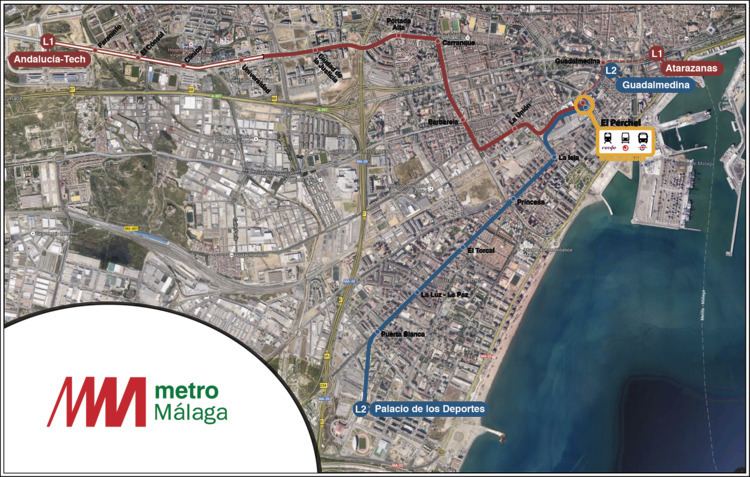Annual ridership 5 million Began operation July 30, 2014 Number of stations 17 | Number of lines 24 (planned) Number of vehicles 14 CAF Urbos 3 | |
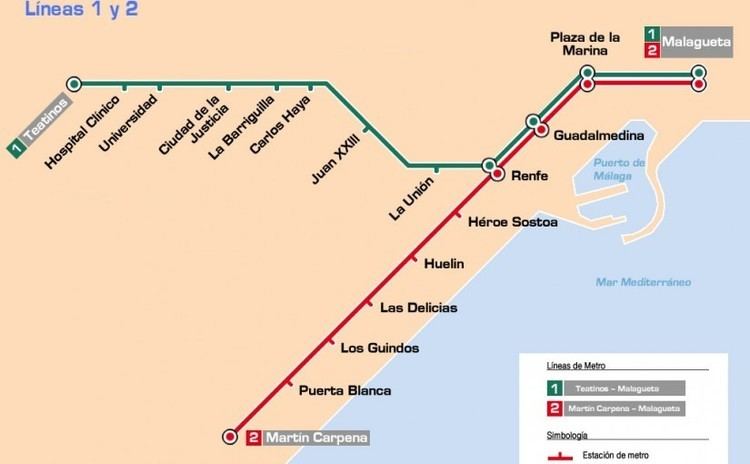 | ||
Operator(s) Agencia de Obra Pública de la Junta de Andalucía | ||
The Málaga Metro (Spanish: Metro de Málaga) is a light metro network in Málaga, Spain. Having been proposed during the 1990s to ease the cites crippling congestion, the 'ministry of public works and transport' commissioned a study in 2001 into the feasibility of constructing a metro system within the city. The eventual plan envisioned four lines radiating from the city's center, with stations roughly 500 meters apart to allow a high level of accessibility, funding for the project coming from both the local and national government levels. The system was originally scheduled to open on 31 October 2013. Its two lines finally opened in service on 30 July 2014.
Contents
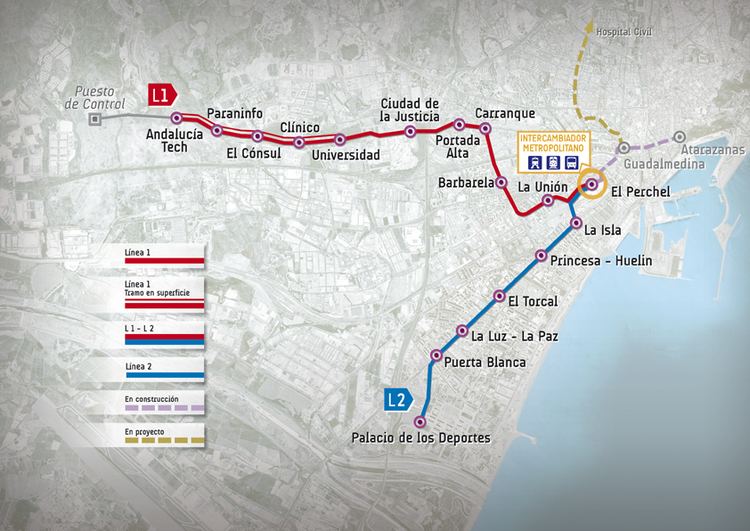
Whilst the original plan called for four lines (of which two have been built) the current plan is for a total of 6 lines to connect the most populated suburbs to the city center.
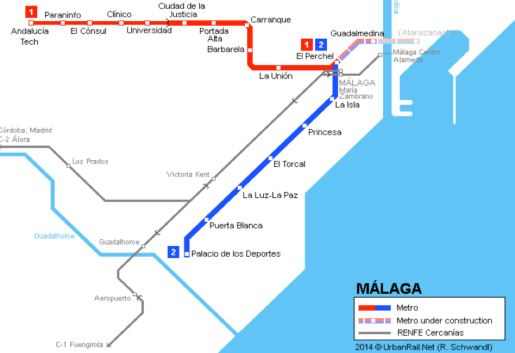
Lines
The following table lists the important characteristics of the metro's two lines:
Route
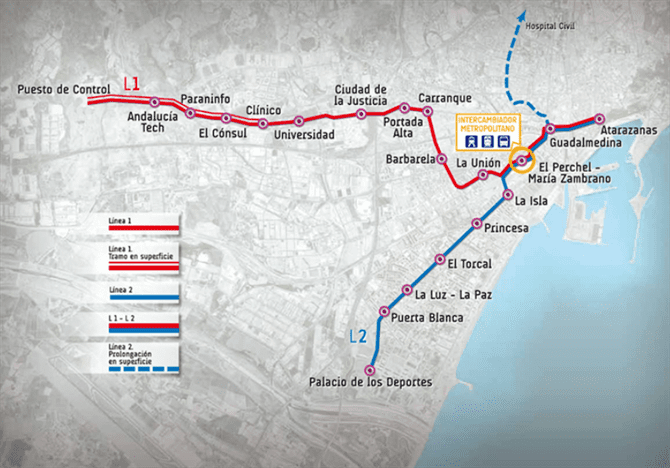
Both lines of the Málaga Metro run underground in the city centre. Line 1 goes from the city center to the University of Málaga. Between Clínico station and the Andalucía Tech terminus, Line 1 runs at the surface which includes some at-grade intersections.
Line 2 runs entirely underground from the city centre to the Jose Maria Martin Carpena Arena.
Rolling Stock
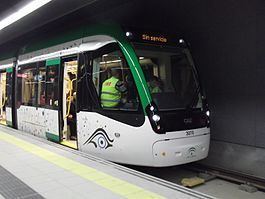
The trains, called 'Urbos 3' and used for the entire system, are manufactured by the Spanish company Construcciones y Auxiliar de Ferrocarriles. They are fully covered by CCTV and are air conditioned throughout; an effort to provide security and comfort to a full capacity train car of 56 seated passengers with 170 standing. Whilst this capacity figure is accurate for likely peak-time usage, the trains are also fully accessible to disabled passengers, the commuting of whom may lower the capacity slightly.
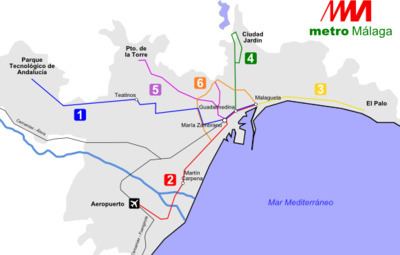
The trains are already in successful widespread use in other cities, including 30 units on trams in Belgrade and 40 are also planned for the Cuiabá system in Brazil. Malaga's metro however, represents the largest single order of the model.
